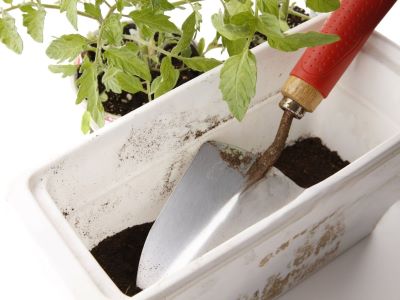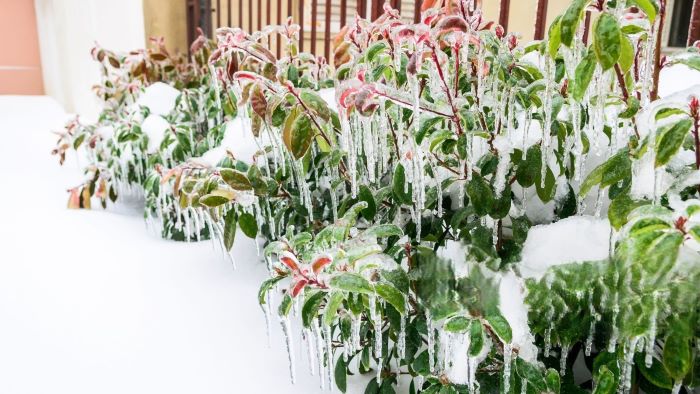Plants are living organisms, they also need a suitable environment to grow and thrive. However, sometimes they may encounter unfavorable conditions, which can harm them, such as cold shock.
One of the most common causes of plant distress is cold shock. Today, we will talk about how to identify the signs plants are too cold, how to prevent them, and how to treat them.
So put on your warmest sweater, grab a cup of hot cocoa, and join us as we explore the world of cold shock!❄️🍂🌱
Contents
What Is Cold Shock?
Cold shock is when temperatures drop to freezing levels, and water vapor condenses and freezes, forming frost. When the combination of cold winds and temperatures hits plants, the water inside their leaves freezes. This promotes cell damage and death, which consequently damages and kills the entire plant.

Though cold shock seems more of a threat to outdoor plants but indoor plants are also at equal risk. Most indoor plants are tropical, making them extremely sensitive to temperatures under 50° F / 10° C. Many may die as soon as the temperature drops, but tropical plants generally die within 12 – 24 hours of exposure.
Signs Plants Are Too Cold
As we know, temperature is one of the key environmental factors that influence plant development and performance. Different plants have different temperature requirements, depending on their origin and adaptation. Some plants are cold-hardy and can survive low temperatures, while others are cold-sensitive and may experience injury or death.
To prevent or minimize cold damage, it is important to recognize the signs of cold stress in plants. Some common signs plants are too cold are:
1. Wilting or Curling Leaves
Healthy leaves have a certain firmness to them. They keep their flattened shape, and stems give the support they need to stick out from their branches. When a plant gets too cold, it may lose this firmness, which results in curling edges or wilting.

The damage and death of cells hinder the plant’s rigidity, causing leaves and stems to droop.
2. Discolored Leaves
Not all changes in autumn leaf color mean great fall foliage. Depending on the plant and on the severity of cold shock, leaves in fall (or spring) on affected plants may develop white, yellow, red, or purple spots, brown patches, or turn totally black. So, you can see spots of dead cells as white, yellow, or red marks on leaves. Not all cells will immediately be affected; some damage may be delayed.

3. Structural Damage
All above-ground growth becomes soft and wet, or woody stems or trunks develop splits. This is a sign that the plant tissue has been severely injured by subzero temperature and may not recover. In addition, structural damage can also affect the plant’s ability to transport water and nutrients, leading to further deterioration.
4. Loose Root Ball
The root ball of a healthy plant anchors it to the ground. It is composed of roots that grow in a compact mass around the soil. When a plant suffers from cold shock, the roots may die or become weak, resulting in a loose root ball. This makes the plant unstable and prone to falling over or being uprooted by wind or animals.
How Can You Treat Cold Shock?
Although all the damage already done to a plant is permanent, it is not necessarily mean that the whole plant has to die. Depending on the plant’s condition, it may still recover and survive with the correct care.
Here are some tips on how to treat cold shock:
- Replant into suitable soil or container media.
- Trim off any dead or damaged parts such as leaves, branches, and roots. This will prevent fungal infections and allow the plant to focus its energy on new growth.

- Move indoor plants away from windows and place them in a warm spot with bright indirect light.
- Cover outdoor plants with frost cloth, plastic sheeting, or mulch to protect them from further frost damage.
- Avoid fertilizing or pruning plants until they show signs of recovery.
Conclusion
Concluding our blog; Signs plants are too cold! Hopefully, we were able to serve you the appropriate content.
Quickly recall it!
Cold shock is a serious threat to plants that can cause irreversible damage or death. However, by recognizing the signs of cold shock and taking appropriate measures to treat it. We hope you found our post informative and helpful.
If you have any questions or comments about cold shock or plant care in general, please feel free to leave them below. We would love to hear from you!

Hi, I’m Jacqueline, the editor-in-chief of cozynest. I have a passion for plants and gardening, also, have a degree in horticulture from the University of California, Davis. I love to share my knowledge and experience with our readers and help them create beautiful and healthy gardens, indoors, and outdoors. I also enjoy experimenting with different plant varieties, designs, and techniques, and learning from other experts in the field. When I’m not working on cozynest, you can find me in my own cozy nest, surrounded by my favorite plants and books.

